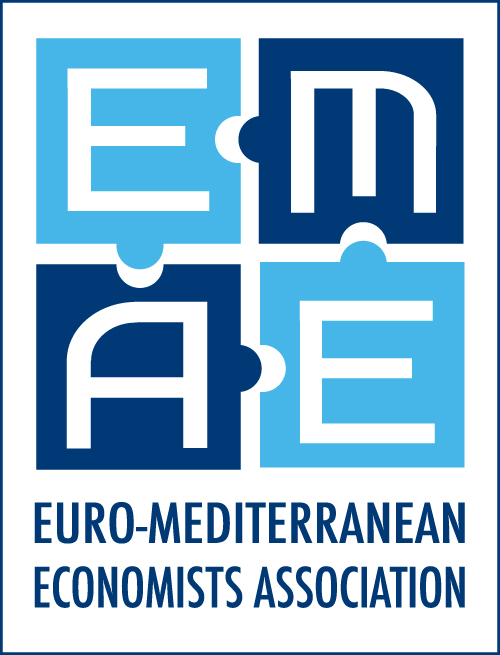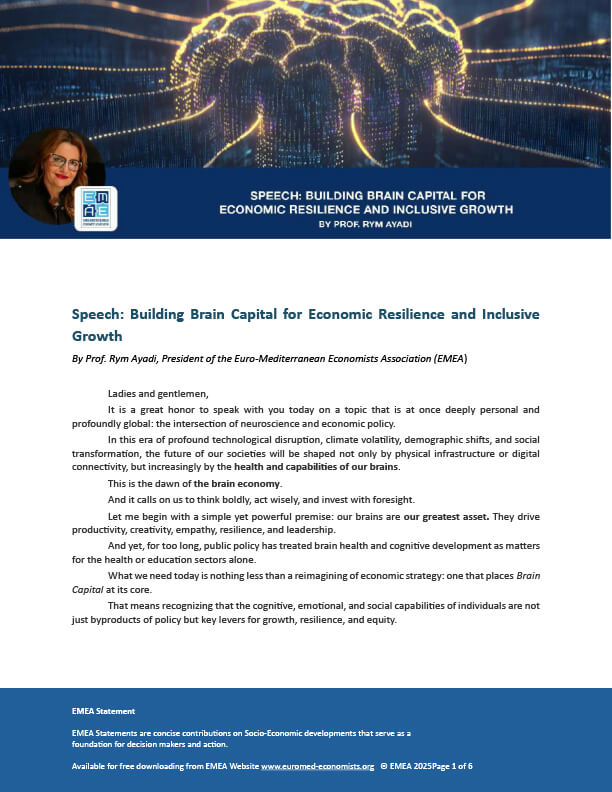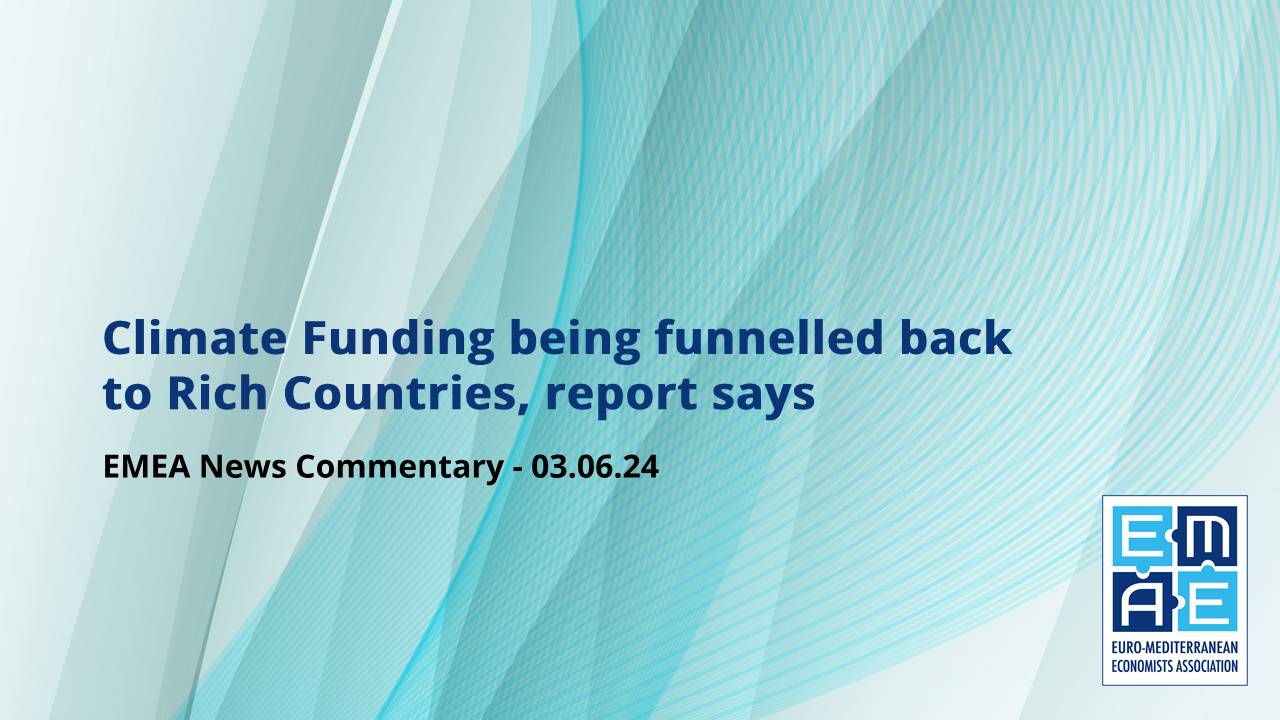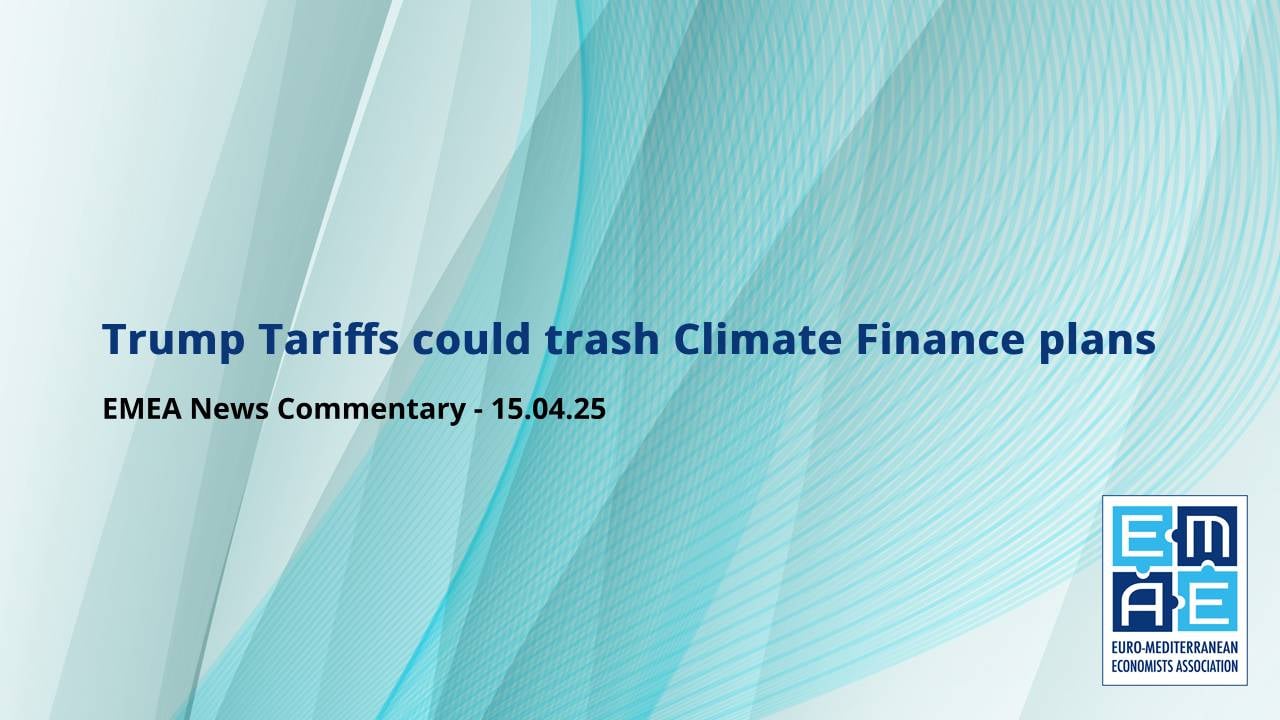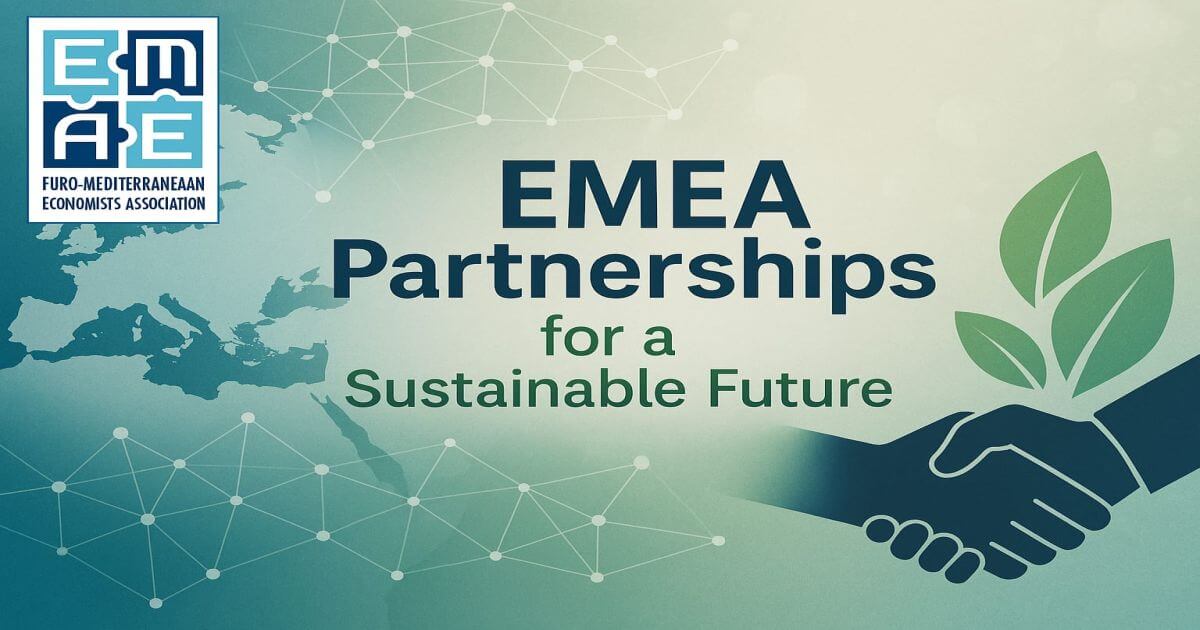Wealthy nations including the United States, France, Germany and Japan, are “reaping billions of dollars in economic rewards” from a programme intended to deliver financial aid to developing countries hardest hit by climate change, an independent investigation has revealed.
Despite developed economies pledging an annual flow of $100 billion to poorer regions of the world, most of the money has been leant at market rate – meaning much of the funding has been channelled back into their own coffers.
The “deeply reprehensible” revelations have to come to light following a Reuters review of data from the United Nations Framework Convention on Climate Change (UNFCCC) and Organisation of Economic Cooperation and Development (OECD).
At least a dozen climate finance analysts, activists, former climate officials and negotiators told Reuters that “by channelling money from the programme back into their own economies” wealthy countries had contradicted “the widely embraced concept that they should compensate poorer ones for their long-term pollution that fuelled climate change.”
In excess of $18 billion had been loaned by wealthy nations at market-rate interest – with more than half that amount coming from Japan. “That is not the norm for loans for climate-related and other aid projects, which usually carry low or no interest,” declared the Reuters review.
Their findings further exposed:
- Over $11 billion in loans – again nearly all from Japan – required recipient nations to hire or purchase materials from companies in the lending countries.
- At least $10.6 billion in grants from 24 countries and the European Union also required recipients to hire companies, nonprofits or public agencies from specific nations – usually the donor – to do the work or provide materials.
Offering market rate climate loans and conditioning funding, based on hiring certain companies, led to money being transferred back from developing countries to wealthy ones, Reuters reported.
“From a justice perspective, that’s just deeply reprehensible,” said Liane Schalatek, associate director of the Washington branch of the Heinrich-Boll Foundation, a German think tank that promotes environmental policies.
“Climate finance provision should not be a business opportunity. It should serve the needs and priorities of recipient developing countries,” Schalatek added.
Extensive research
The Reuters team reviewed 44,539 records of climate finance contributions reported to UNFCCC. Contributions were from 34 countries and the European Union, covering the period from 2015 to 2020.
Reporters also analysed 133,568 records collected by the OECD identifying the hiring conditions that were tied to climate-related finance over the same period.
Reuters said that the UNFCCC hadn’t required countries to report key details of their financing, meaning their records lacked detail.
So, to better understand the funding patterns revealed by the data, reporters had “consulted 38 climate and development finance analysts and scholars, climate activists, former and current climate officials and negotiators for developing nations, and representatives of development agencies for wealthy nations.”
Many of the conditional loans and grants Reuters observed were part of the pledge by developed nations to send $100 billion a year by 2020 to poorer countries disproportionately harmed by climate change. Reuters said it was unable to determine the percentage of those loans that carried market interest rates or hiring conditions, due to “uneven reporting by multilateral groups.”
Roughly $353 billion was paid between 2015 and 2020, including $189 billion in direct country-to-country payments – 54% of which came in the form of loans and not grants.
Reuters said this rankled amongst some representatives from indebted developing nations, such as Ecuador, who were against taking on more debt “to solve problems largely caused by the developed world.”
According to several analysts, countries had also overstated their contributions to the $100 billion pledge, Reuters reported. This was because a portion of their climate finance flowed back to them through loan repayments, interest and work contracts.
Defence of the rich nation position
The countries that gave most in the way of climate funding to the UN – Japan, Germany, France and the United States – defended their position by saying they prioritised funding to the poorest countries. But they took into account the level of debt each country carried before deciding whether to offer loans or grants.
Around 83% of funding to the lowest income nations came in the form of grants. On average, however, they received “less than half as much climate funding as higher-income nations that mostly received loans,” the Reuters review uncovered.
“This is a classic example where a bad loan, which has been given to a country in the garb of climate finance, will create further … financial stress.” said Ritu Bharadwaj, principal researcher on climate governance and finance at the International Institute for Environment and Development.
Germany, which had contributed $45 billion in climate funding, 52% of which was loaned, said that “a mix of loans and grants ensures that public donor funding can be directed to countries that need it most, while economically stronger countries can benefit from better-than-market rate loan conditions.”
It was reported that 90% of France’s $28 billion contribution came in the form of “low interest rate” loans, the highest share of any nation.
Meanwhile, a U.S. State Department spokesperson said loans made up 31% of the country’s $9.5 billion climate funding spend. These were “appropriate and cost-effective” for revenue-producing projects. Grants typically went to other types of projects in “low-income and climate-vulnerable communities.”
The spokesman emphasised that the Paris Agreement’s climate finance provisions were not based on ‘making amends’ for harm caused by historic emissions.
Reuters reported that The Paris Agreement hadn’t stated outright that developed nations should make amends for historic emissions. But the news agency referenced the Agreement’s principles of “climate justice” and “equity.” It noted that countries had “common but differentiated responsibilities and capabilities” to grapple with climate change.
Rachel Kyte, an Oxford University climate policy professor and a former World Bank special envoy for climate change, said that many people interpreted the language used “to mean that wealthy nations have a responsibility to help solve climate-related problems they had an outsized role in creating.”
Nevertheless, the Agreement was “short on specifics.” Grants were never defined as being a priority over loans and there was nothing in the wording that prohibited “wealthy nations from imposing terms advantageous to themselves.”
Of this practice, Andres Mogro, Ecuador’s former national director for adaptation to climate change, said: “It’s like setting a building on fire and then selling the fire extinguishers outside.”
Funding pales in comparison to climate finance targets
Reuters said the publication of their review came at a time “when countries are trying to negotiate a new, higher climate financing target by the year’s end. The UN had estimated that at least $2.4 trillion a year was required to meet the Paris Climate Agreement’s 2 degree additional global temperature target.
But recent climate mitigation funding “pales in comparison,” said Reuters. Wealthy countries had only met the $100 billion annual goal for the first time in 2022.
The OECD had estimated that, between 2015 and 2020, wealthy nations had funnelled at least $164 billion towards the climate finance pledge via multilateral institutions – about 80% of it loaned. This was in addition to countries’ direct contributions.
According to a 2023 Reuters investigation, at least $3 billion of the direct spending had gone towards projects “that did little to help countries reduce emissions or guard against the harms of climate change.” Their findings revealed that large sums went to projects unrelated to climate initiatives.
A vicious cycle
Heavily indebted countries faced a vicious cycle, Reuters opined. Debt payments restricted their ability to invest in climate solutions, whilst extreme weather caused severe economic losses. This often resulted in them borrowing even more.
But given the large shortfall in climate project financing, Reuters said some analysts were now arguing that lending needed to be part of the funding equation.
In line with this assessment, development aid representatives from the U.S., Japan, France, Germany and the European Commission said loans had enabled them “to funnel far more money to significant projects than they could if they relied solely on grants.”
A number of people who had worked on climate issues in developing nations told Reuters that they considered loans “to be necessary to fund ambitious projects given the limited funding wealthy nations have allocated for climate finance.”
For this to succeed, the representatives said that “future pledges should require that rich nations and multilateral institutions be more transparent about the lending terms and offer guardrails against loans that create suffocating debt.”
Oxford University climate policy professor Kyte was stark in her assessment: “The way the international financial system works at the moment… is to dig even deeper a hole. We have to say, ‘no, no more digging, we’re going to fill the hole and lift you up.’ “
UNFCC focus on concessional loans
UNFCCC and OECD have made no comment about the Reuters report. The agency was referred back to previous comments by UNFCCC Executive Secretary, Simon Stiell, publicly urging wealthy nations to offer so-called concessional loans, with very low interest rates and long repayment periods, making them less costly than those sold on the open market.
But according to UN reports between 2015 and 2020, only about 18% of climate loans from wealthy countries, or $18 billion, were apparently not concessional.
As an example, France had given a $118.6 million non-concessional loan to Ecuador’s port city Guayaquil in 2017 to build an aerial tramway, as part of its climate finance pledge. A French transportation company, Poma, had won the contract to build the tramway.
But the scheme had only created one-fifth of the ridership projected in early planning documents – resulting in lower-than-expected revenue and environmental benefit. This had demonstrated how the global programme had created “expensive debt in developing countries in exchange for few environmental gains, while lending nations benefit.”
Euan Ritchie, senior policy adviser at Development Initiatives, an international policy organisation, said the project amounted to a “transfer of wealth from Ecuador to France.”
A spokesperson for the French development agency disagreed, saying that the tramway belonged to the city and that the agency had assessed the risk of financial stress before approving the loan. They had no say in the selection of contractors. The aerial tramway had already resulted in a “significant greenhouse gas reduction,” despite low ridership, said the spokesperson.
But Reuters reported that France’s development agency had “trumpeted the successes of French companies in landing such contracts.” The agency’s 2022 annual report had shown that more than 71% of its projects that year involved “at least one French economic actor,” garnering them 2 billion euros in “economic benefits.”
Robbing local companies of business opportunities
According to OECD records, in Japan almost 32% of the country’s climate loans had required borrowers to use at least some of the money to hire Japanese companies. The loans “have funnelled at least $10.8 billion back to the Japanese economy,” said the Reuters review.
A spokesperson for the Japan International Cooperation Agency (JICA), said their conditional loans carried “very favourable terms for borrowers and usually involve local consultants, contractors and workers.” Reuters reported that the JICA policy during the review period “required that this type of loan carry an interest rate of 0.1% and a 40-year repayment period.”
Erika Lennon, senior attorney at the Centre for International Environmental Law Aid said hiring conditions robbed local companies of business opportunities and eliminated chances for developing countries to build expertise in sustainable technologies.
Reuters also said that conditional aid could “carry additional costs because recipients can’t consider cheaper contractors.” In 2001, the OECD had recommended a halt to such requirements.
But the agency’s review had found that many countries frequently imposed similar hiring requirements on grants, with 18% of all climate-related grants reported to the OECD between 2015 and 2020 carrying such requirements for all or part of the grant.
They reported that the EU had extended $4 billion in grants which required recipients to hire companies or agencies from specific countries. The United States ($3 billion) and Germany ($2.7 billion) had provided grants with similar strings attached.
A spokesperson from Germany’s Ministry for Economic Cooperation and Development, said that their grants didn’t require hiring German companies and there was no policy favouring national suppliers. But they frequently required recipient countries to pay Germany’s international development agency, GIZ, for consulting and other technical services, the spokesperson said.
An EU spokesperson said nearly all of the European Union’s aid since 2021 had been free of such hiring stipulations. The US State Department said all its aid, regardless of who won the work contracts, benefitted recipient countries.
But Reuters reported that OECD data listed U.S. companies, nonprofits or governmental agencies as being “the main entities receiving money from at least 80% of the U.S. conditional climate grants, totalling $2.4 billion.”
Rich nations are earning billions from a pledge to help fix climate (reuters.com)
